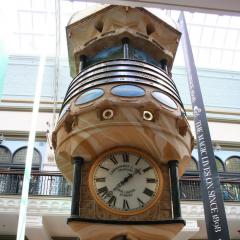-
Recently Browsing
- No registered users viewing this page.
-
Topics
-
Posts
-
Non-magnetic is a poor description of such a hairspring. A better description would be unmagnetisable hairspring. There are metals and alloys that are attracted to magnets, but don’t become magnetised themselves. A hairspring made out such a material will be attracted to magnetised tweezers, but will not become magnetised. These hairsprings can be disrupted by being in close proximity to a magnet, but the disruption will cease the moment the magnet is moved away. These are hairsprings that could conceivably be disrupted by a magnetised hairspring stud. Best Regards, Mark
-
By ManSkirtBrew · Posted
More than enough. Here's mine at the height I work at. I think the working distance with the included 0.5x Barlow lens is about 9". So yes, that halves the magnification. The full story is the objective lens goes from 0.7x to 4.5x. The eyepieces are 10x, giving you the advertised magnification of 7x-45x. However the working distance is unacceptably short, so it comes with an 0.5x Barlow lens, reducing the magnification range to 3.5x-22.5x, but giving you a good working distance. What I did was buy a pair of Extreme Widefield 20x Eyepieces for when I need more magnification. You keep your high working distance, but get your 45x magnification back, at the cost of some width of field. -
By Neverenoughwatches · Posted
Modern ones after blue steel, invar, elinvar and nivarox , the shiny one are not supposed to become magnetised. But i have had them jump to tweezers. And i dont really understand the comment that what can be magnetised is the stud carrier and rate regulator and they can attract the hairspring ? If the hairspring is non magnetic then how can it be attracted to something else thats become magnetise, its non magnetic , that doesn't really make sense to be ? -
By Neverenoughwatches · Posted
Does it say 17 jewels on the dial or on the movement ?
-








Recommended Posts
Join the conversation
You can post now and register later. If you have an account, sign in now to post with your account.
Note: Your post will require moderator approval before it will be visible.